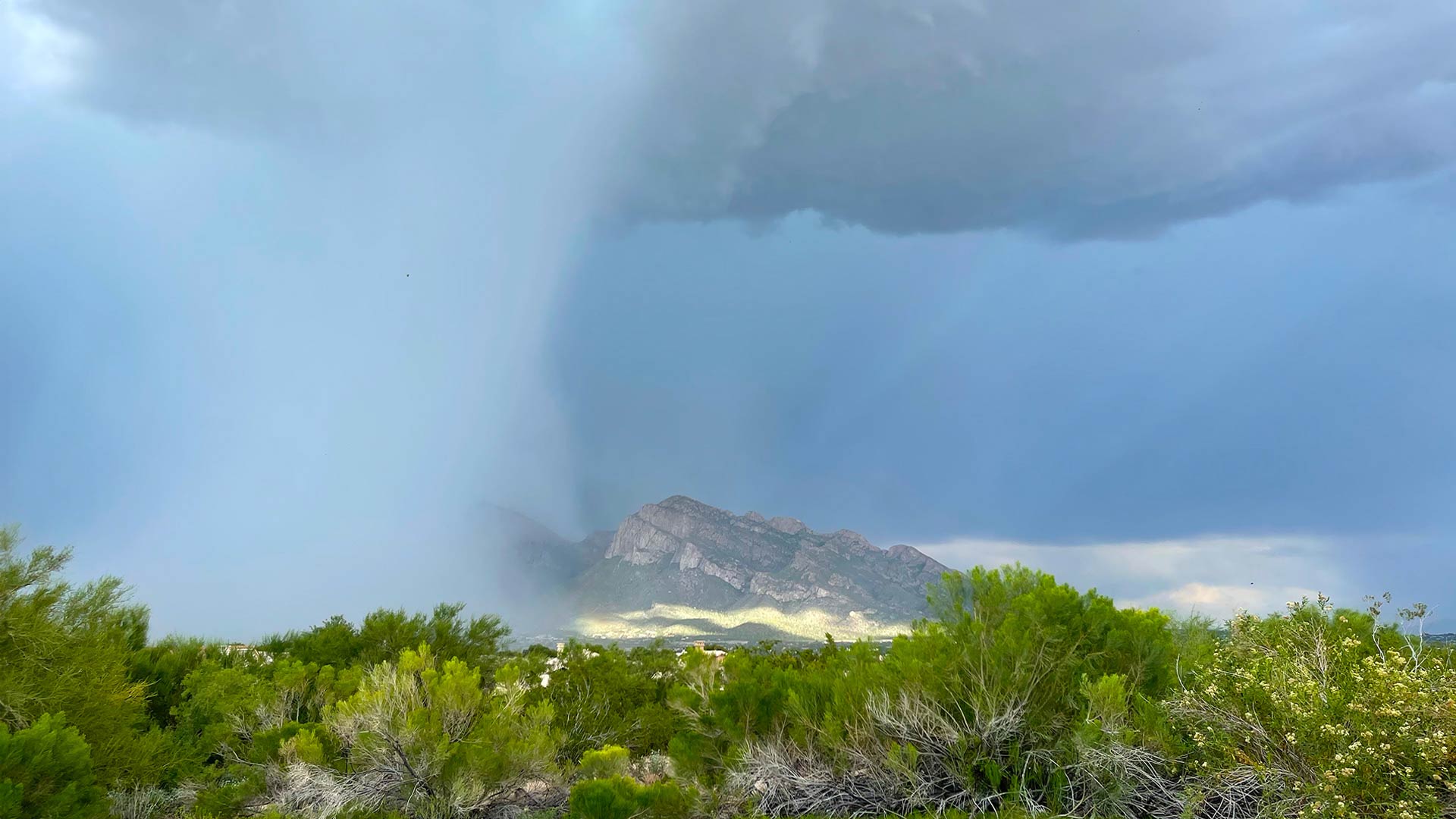 A storm northwest of Tucson drops heavy rain on Oro Valley.
A storm northwest of Tucson drops heavy rain on Oro Valley.
San Carlos Apache Chairman Terry Rambler wants answers after the northern half of the reservation in southeastern Arizona was without electricity for nearly a day after a storm blew down a major electrical transmission line.
“This kind of electrical failure is usually equated with developing countries, not the United States,” Rambler said in a statement Monday.
Tribal officials say the transmission line fails routinely and leaves residents and businesses without power — sometimes for days. The power outage Saturday disrupted mobile phone service, shut down two community wells, and forced the hospital to use a backup generator, the tribe said.
A tribal emergency response team set up a shelter and provided water and ice to residents before power was restored early Sunday afternoon.
Rambler said the tribe repeatedly has asked federal authorities to replace the transmission line and create better access to it. Part of the delay in restoring power was due to the rugged terrain crews had to travel over to reach downed lines, the tribe and the U.S. Bureau of Indian Affairs said.
Rambler is scheduled to meet with Interior Secretary Debra Haaland in Washington next month to talk about funding solutions to prevent future outages, he said.
The transmission line, in a remote area between Coolidge Dam and Winkelman, dates back to 1924 when the BIA established the San Carlos Irrigation Project to provide electricity to residents on and off the reservation, and irrigation water and pumping to private landowners.
It's still owned by the BIA, one of three such utilities around the country. The other two serve the Colorado River Indian Tribes in Arizona and California, and the Confederated Salish and Kootenai Tribes in Montana.
The San Carlos project relies primarily on its customer base to fund operation and maintenance, and doesn't have the authority to borrow money for repairs or capital improvements, BIA spokesperson Joshua Barnett said in a statement Wednesday.
Funding from the federal infrastructure law — $3 million over the past three years — is helping to address repairs, upgrades, and replacements in the system, the agency said. The BIA also is conducting a study to adjust rates for electric customers, a process that will include public comment, the agency said.
Other Native American tribes grapple with longstanding infrastructure deficiencies, including electricity, running water, and broadband access.
The U.S. Department of Energy's Office of Indian Energy has been working with tribes on funding projects aimed at making their existing systems more resilient and transitioning to clean energy. Between 2010 and 2022, the office invested over $120 million in more than 210 energy projects across the U.S.

By submitting your comments, you hereby give AZPM the right to post your comments and potentially use them in any other form of media operated by this institution.